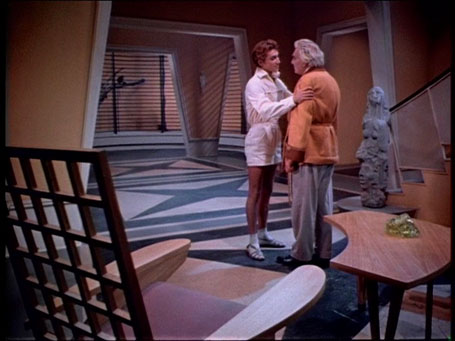
The Rzhevsky Collection is the largest collection of Soviet films in the United States and one of the largest outside of Russia, with over 280 titles from the Soviet Union produced between 1925 and 1982. The bulk of the collection is made up of feature-length narrative films from the 1950s, 1960s, and 1970s, one of the richest periods in the history of Soviet cinema. The collection also contains about one hundred non-fiction titles, ranging from newsreels and travelogues to full-length documentaries. Most of the features in the collection are on 35mm film and have not been subtitled; a number of films have English subtitles or English voiceover narration.
The Wisconsin Center for Film and Theater Research acquired the collection in 1988 from the family of Jaroslav Rzhevsky (1907–1988), who founded Cultural and Education Cinema (Kulturno-prosvetitel’noe kino) in the 1960s to screen Soviet films for émigré audiences in the United States. The company, run by Rzhevsky and his wife, Sofia, purchased the films from Sovexportfilm, the Soviet film exporter, after viewing them at the Soviet consulate in New York; from the Soviet-film distributor Artkino Pictures; as well as at U.S. customs auctions. It exhibited films on a weekly basis up to the late 1980s at Russian-speaking venues, primarily in New York and New Jersey. Cultural and Education Cinema also operated an office-turned-theater on W. 38th Street in Manhattan.
The collection is unique in both its breadth and its depth. Among its treasures are such award-winning films as Ballad of a Soldier (1959), Nine Days of One Year (1961), and Shadows of Forgotten Ancestors (1964). The pre-war period is represented by the classic Civil War epic Chapaev (1934), the Vladimir Lenin biopic Lenin in October (1937), and the Anton Chekhov-based comedy The Bear (1938), among others. The subset of World War II films contains the Oscar-nominated The Dawns Here Are Quiet (1972) and the highly acclaimed The Living and the Dead (1963). The bulk of the collection’s features are popular genre films: dramas, comedies, historical films, and films for children. Among those are some of the most popular Soviet films of all time, including the comedies Carnival Night (1956) and The Diamond Arm (1969), the romantic comedy The Girls (1961), and the beautiful science-fiction melodrama Amphibian Man (1961). The subset of literary adaptations comprises films based on works by Aleksandr Pushkin, Leo Tolstoy, Fedor Dostoevsky, Anton Chekhov, Mikhail Bulgakov, and Vasiliy Shukshin, among other authors. The collection also contains animation films (e.g., The Bremen Musicians, 1969), Soviet co-productions (The Gambler, 1972), and a number of titles featuring the arts and cultures of the Soviet national republics.
The Rzhevsky Collection is an invaluable trove of material for students of Soviet film, culture, and society, as well as for foreign-film enthusiasts. It presents a comprehensive sample of Soviet talent, themes, genres, and approaches to film. The films allow access to a rich cross-section of ideas and visuals representing the Soviet cultural imagination and provide ample material for studies of the Soviet filmmaking tradition. This exhibit discusses what we can learn about the Soviet contribution to world genre cinema based on the Rzhevsky Collection.
To search the WCFTR’s film database, click here.
This featured collection was researched and written by UW-Madison doctoral candidates and Jarchow fellows Booth Wilson and Maria Belodubrovskaya. Thanks to Stephen Jarchow, Vance Kepley, Michele Hilmes, Ben Brewster, Vincent Bohlinger, Maxine Ducey, Dorinda Hartmann, and Heather Heckman. Special thanks to Nicholas Rzhevsky.
